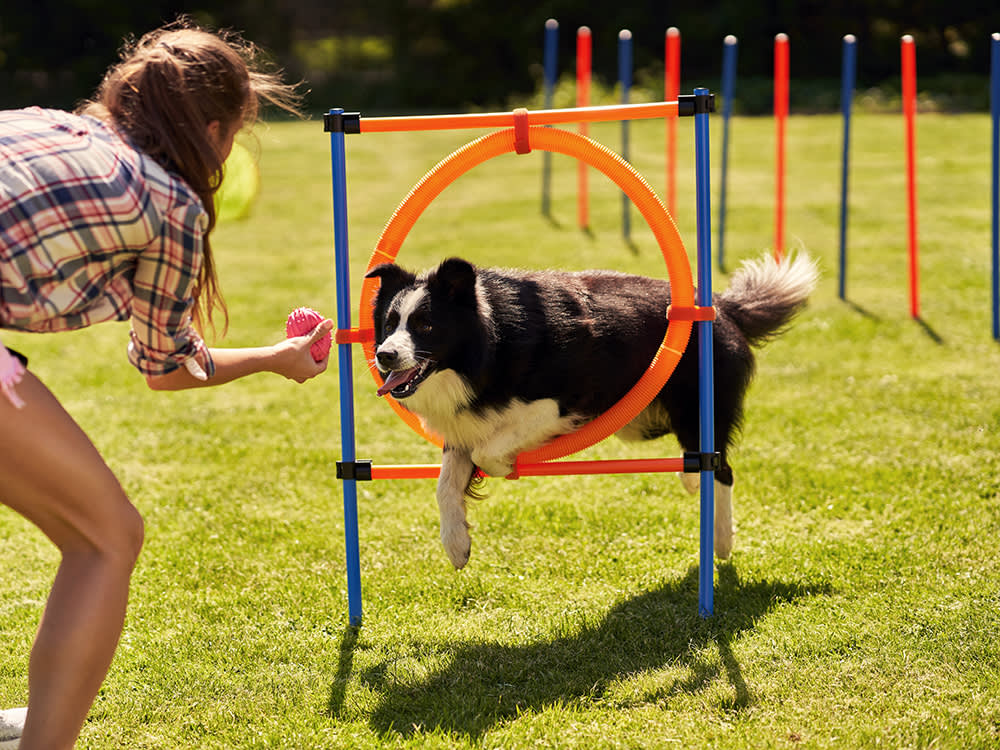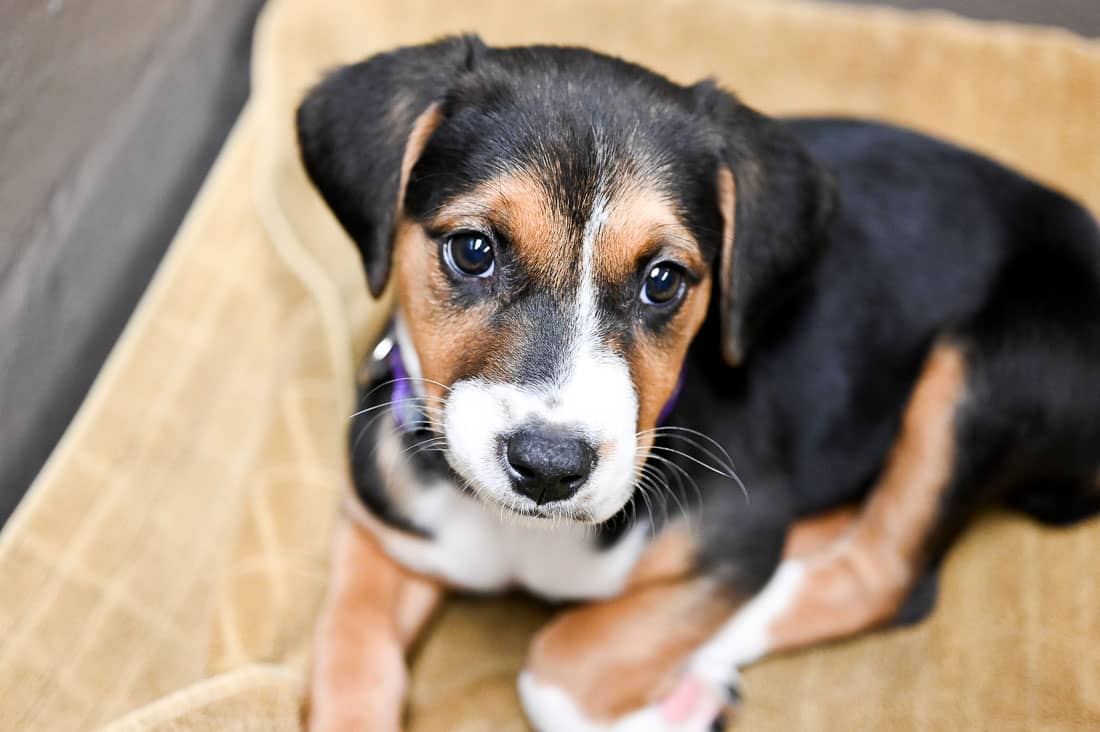Discover the Leading Blunders to Stay Clear Of in Dog Training
Wiki Article
Important Tips for Effective Dog Training: An Overview for Pet Owners
Effective pet training is a diverse procedure that needs a tactical approach customized to both the family pet's character and the owner's purposes. Comprehending just how to navigate these barriers can dramatically improve the training experience, inevitably transforming the connection between proprietor and canine.Recognizing Dog Behavior
Understanding canine actions is necessary for effective training and fostering a harmonious relationship in between canines and their owners. dog training. Canines interact primarily with body language, vocalizations, and actions, making it vital for proprietors to interpret these signals precisely.
Socialization plays a considerable role in canine behavior; direct exposure to numerous settings, people, and other animals can considerably affect a canine's personality. Moreover, variables such as type qualities and individual temperament should guide training methods, as some types might have certain behavioral traits that require customized strategies. By understanding these components, owners can develop a helpful environment that urges positive behavior, bring about successful training end results and a deeper bond with their pet dogs.
Developing Consistent Commands
Reliable communication with your dog starts with establishing regular commands. This foundational component of training is crucial for cultivating understanding in between you and your animal. Consistency in the commands you make use of makes sure that your canine can reliably connect certain words or phrases with the wanted actions.When choosing commands, choose clear, distinct words that are simple to claim and distinguish from each other. Avoid utilizing similar-sounding commands that might perplex your canine. For instance, making use of "sit" and "stay" is ideal, but "sit" and "hit" can lead to misunderstandings.
In addition, maintain the same tone and quantity for each and every command. Canines are delicate to vocal hints, so differing your tone can create confusion.
It is similarly essential to guarantee that all relative are on the exact same page pertaining to the commands made use of. A united front in command use will certainly stop blended signals and reinforce the knowing process.
Favorable Reinforcement Methods
The power of positive reinforcement in dog training exists in its capability to encourage wanted habits through incentives and praise. This technique is based in the principle that actions complied with by favorable end results are a lot more likely to be duplicated. By integrating favorable reinforcement into your training regimen, you can properly shape your canine's actions in a useful manner.To implement favorable reinforcement, it's necessary to determine what motivates your pet, whether it be treats, toys, or spoken praise. When your pet dog executes a wanted activity, such as sitting on command, promptly award them with a reward or love. This association in between the command and the positive result strengthens their understanding.
It's critical to timing the benefits appropriately; providing the support within seconds of the wanted actions assists your dog make the link (dog training). In addition, consistency is vital-- guarantee that all member of the family utilize the exact same commands and incentive systems to avoid complication

Gradually, you can reduce the regularity of treats as your canine discovers the habits, transitioning to applaud or recurring rewards. This technique not just cultivates a strong bond between you and your canine however likewise promotes a positive knowing atmosphere, making educating an enjoyable experience for both.
Socialization and Interaction
Constantly revealing your pet to a selection of environments, people, and view it now other animals is important for their social advancement. Socializing must start early, preferably throughout the important home window of 3 to 14 weeks, when pups are most responsive to brand-new experiences. Older dogs can also benefit from ongoing socialization efforts.Present your dog to different setups, this article such as parks, pet-friendly shops, and city locations. This direct exposure aids them adjust to different stimuli, minimizing stress and anxiety and concern feedbacks. Urge favorable communications with various other pet dogs and individuals, making certain that these encounters are controlled and safe to foster confidence.
Use structured playdates with courteous canines, as this can enhance your dog's social skills and instruct them suitable habits. Obedience courses and training sessions additionally offer exceptional possibilities for socialization, enabling your pet to engage with others in a supervised atmosphere.
Display your canine's body movement during communications, as this will aid you evaluate their comfort degree. Progressively enhance direct exposure to more difficult circumstances while guaranteeing that each experience declares. A well-socialized canine is more probable to show well balanced actions, making them a delight to have in any kind of setup.
Resolving Usual Training Difficulties
Every dog proprietor will certainly encounter training obstacles at some time, no matter their dog's age or socializing degree. Recognizing common problems such as stubbornness, distractions, and fearfulness can aid in creating efficient strategies for enhancement.
Disturbances during training sessions can hinder emphasis. To combat this, begin training in a silent atmosphere with marginal stimuli. Gradually see post present diversions as the canine becomes a lot more competent in commands. Short, constant training sessions are likewise effective in maintaining attention.
Fearfulness can hinder a dog's learning process. Steady desensitization to the resource of concern, combined with favorable reinforcement, can help reduce anxiety. Perseverance is critical; never ever require a canine into a situation that creates distress, as this might aggravate the concern.
Eventually, understanding and resolving these common challenges with a structured technique will certainly promote a much more productive training experience, strengthening the bond between dog and owner while promoting reliable learning.
Verdict
In summary, effective dog training depends on a detailed understanding of canine actions, the facility of regular commands, and the application of favorable support techniques. Socialization plays a vital role in establishing well-adjusted pet dogs, while attending to usual training difficulties calls for persistence and adaptability. By executing these vital methods, pet owners can foster a solid bond with their pet dogs and promote preferable habits, inevitably causing a harmonious relationship in between humans and their canine friends.Recognizing dog actions is vital for effective training and promoting a harmonious connection in between pooches and their owners.Socialization plays a considerable role in canine actions; direct exposure to different settings, individuals, and other animals can significantly influence a dog's personality.The power of favorable support in dog training lies in its capability to urge wanted behaviors through benefits and praise. By integrating positive reinforcement right into your training routine, you can efficiently shape your pet dog's actions in a constructive manner.
In summary, effective pet training relies on a thorough understanding of canine habits, the establishment of consistent commands, and the application of positive support techniques.
Report this wiki page